Introduction
Non-inclusive design affects disabled people’s ability to travel across all types of transport, at different stages of their journeys, every day.
Disabled travellers face physical and infrastructure barriers, as well as emotional, social and informational challenges.
Accessibility is often inconsistent and unpredictable across different types of public transport, creating significant challenges for disabled passengers.
Our aim for this project was to translate disabled people’s everyday realities and experiences into practical, human-centred design opportunities which could provide people with greater independence, confidence and dignity when travelling.
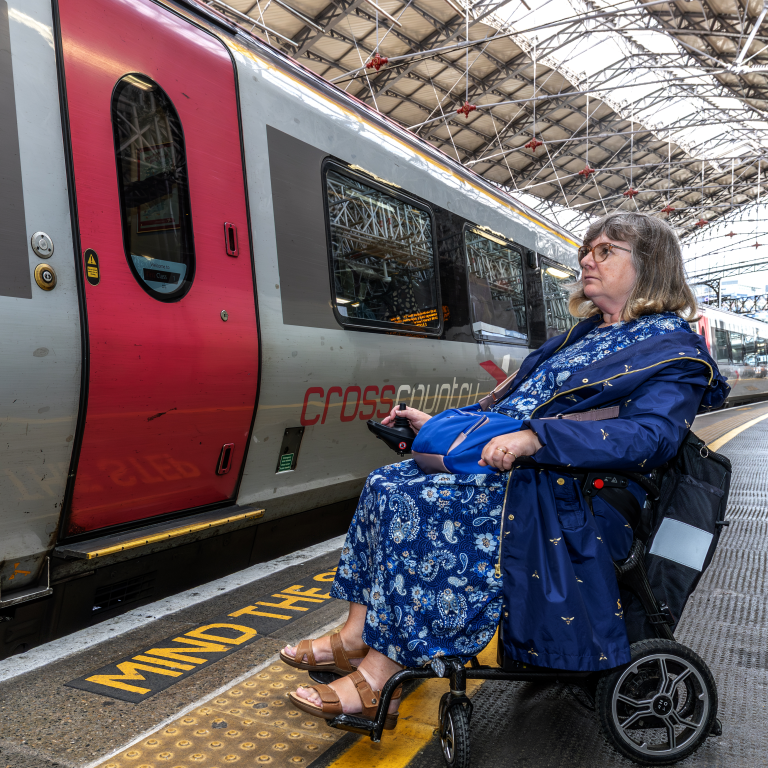
The outcome of the research is in two parts – the first is the “Highlights Report” immediately below this text, designed to summarise how the project was undertaken, identify it’s findings, and also include a short overview of the design opportunities that were developed. The “Full Report” from which the “Highlights” is drawn can be found at the bottom of this page.
The second part is the “Design Opportunities”. This is further down the page and includes links to the eight individual design opportunities developed through this project.
Short form Word format
Large print Word format
The links below this text are shortcuts to the relevant sections below
What did we do? How did we do it? What did we find out? What next?

We wanted to understand which travel accessibility barriers could be improved using human-centred design. In order to do this, we conducted a programme of discovery research and user engagement to explore the challenges faced by disabled people when using public transport.
The research aimed to understand the barriers to navigating buses, overground and underground trains. It focused on five key areas: station and stop design, noisy or crowded environments, vehicle seating, live travel information, and journey planning.
“We’re kind of not considered at all; we’re sort of considered as second-class citizens. Even on buses, there’s just an extra space put in for wheelchairs after. They don’t design the whole carriage for easy access, and it’s not just better for people in wheelchairs, it’s better for everyone, I think.”
Quote from research participant
Building on the foundation work that ncat has carried out so far, we wanted to identify areas where there were recurring issues and opportunities for human-centred design to make a real difference.
Initially, we conducted a survey with 482 disabled people to discover the specific barriers they faced. We then carried out qualitative user engagement activities with 50 people, including focus groups, online interviews and in-person conversations at transport stations.
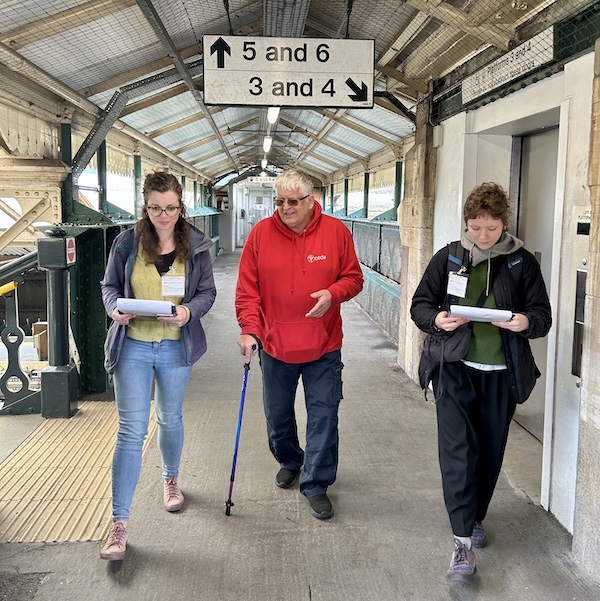
For all the opportunities summarised together in one document, scroll down to the accessible Design Opportunities Key Insights
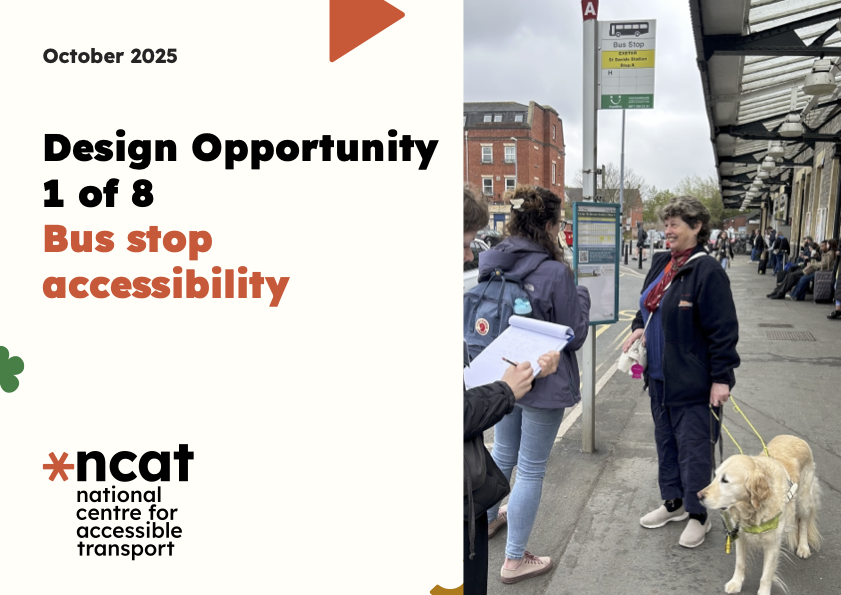
Design Opportunity #1 – Improving bus stop accessibility

Design Opportunity #2 – Bus interior flexibility and accessibility

Design Opportunity #3 – Personalised ‘live’ travel information
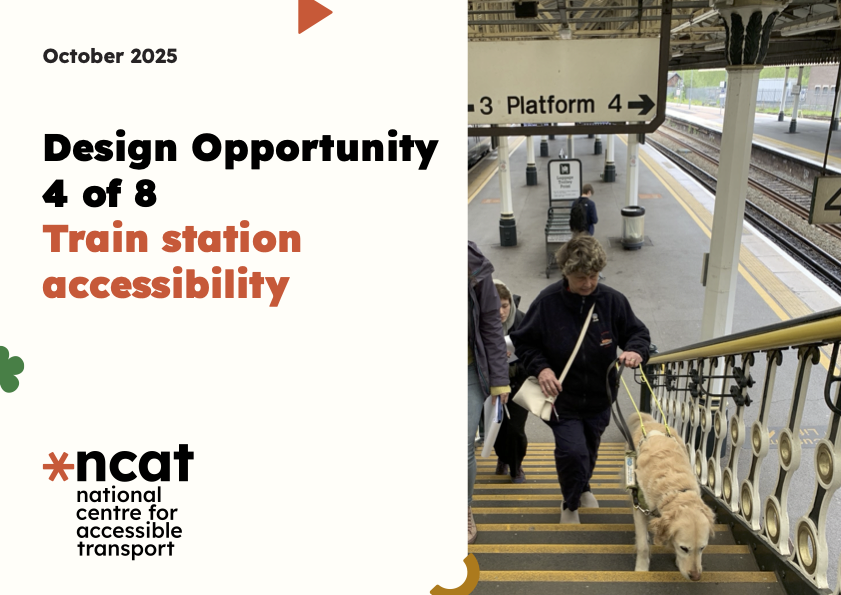
Design Opportunity #4 – Improving train station accessibility
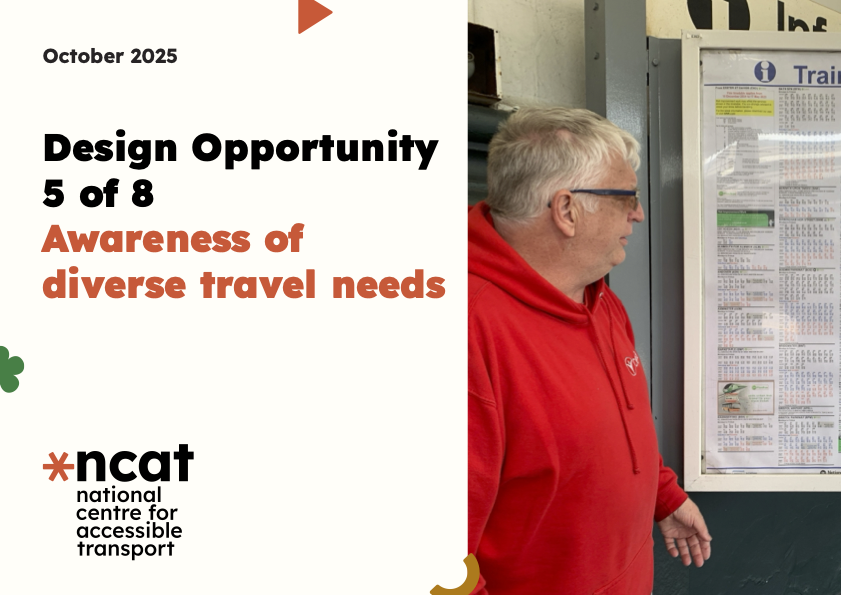
Design Opportunity #5 – Raising awareness of diverse travel needs
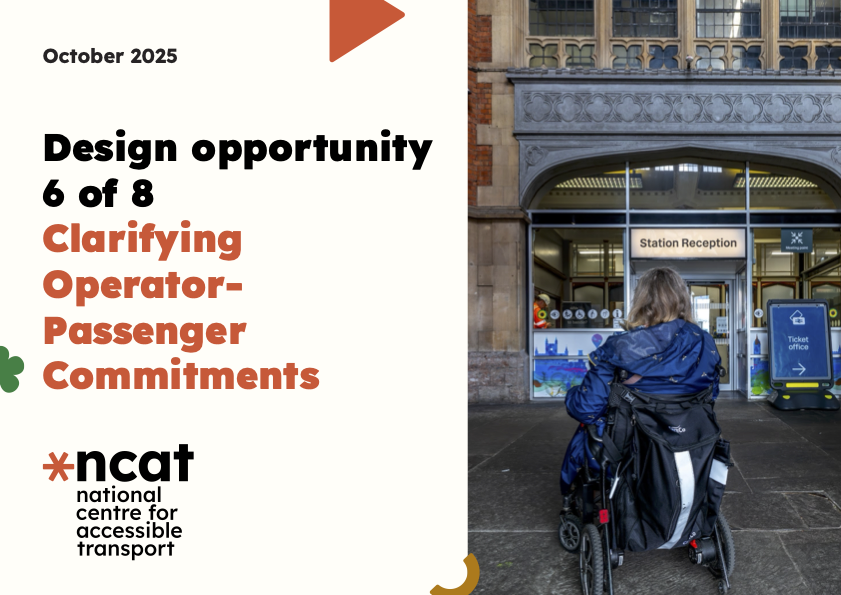
Design Opportunity #6 – Clarifying commitments between transport operators and disabled travellers
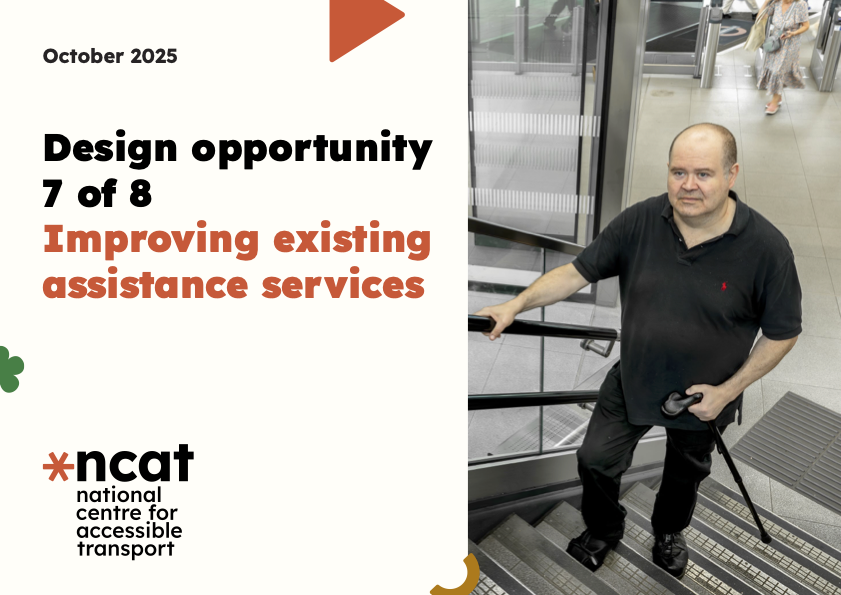
Design Opportunity #7 – Improving existing travel assistance services
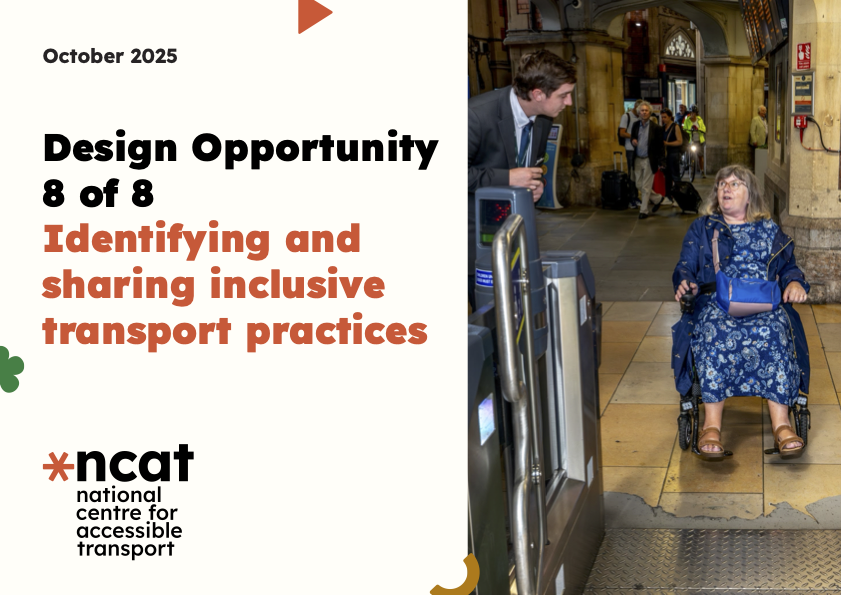
Design Opportunity #8 – Identifying and sharing inclusive transport practice
Our hope is that these design opportunities inspire innovators and the transport industry to help inform their future projects.
The video clips shows a research participant standing, resting on a walking stick, outside an underground train station. He is talking with a researcher about his experiences accessing public transport. As you continue to his voiceover, you see footage of him boarding a busy bus, finding his way to the accessible seating and sitting down, before he continues his conversation with the researcher.
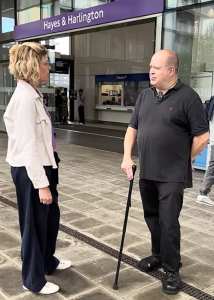
“I think there are a lot less [disabled] people who actually use trains. They would probably like to, but they are worried about what’s going to happen when they get to the station, and if they are able to get on and off trains. If you get stuck on one when somebody doesn’t come with the ramp to get you off, it can make you very anxious and very upset.”
Quote from research participant
We hope that our design opportunities help to encourage action in the transportation sector. They have been produced in a format which makes disabled people’s insights directly usable to spark meaningful innovation and improvement.
These design opportunities are intended for transport operators, manufacturers, designers, small and medium-sized enterprises (SMEs), policymakers, and other stakeholders to address accessibility challenges.
Our Full Report here contains all the report findings, including appendices and references. Browse the options and access the version that works best for you.